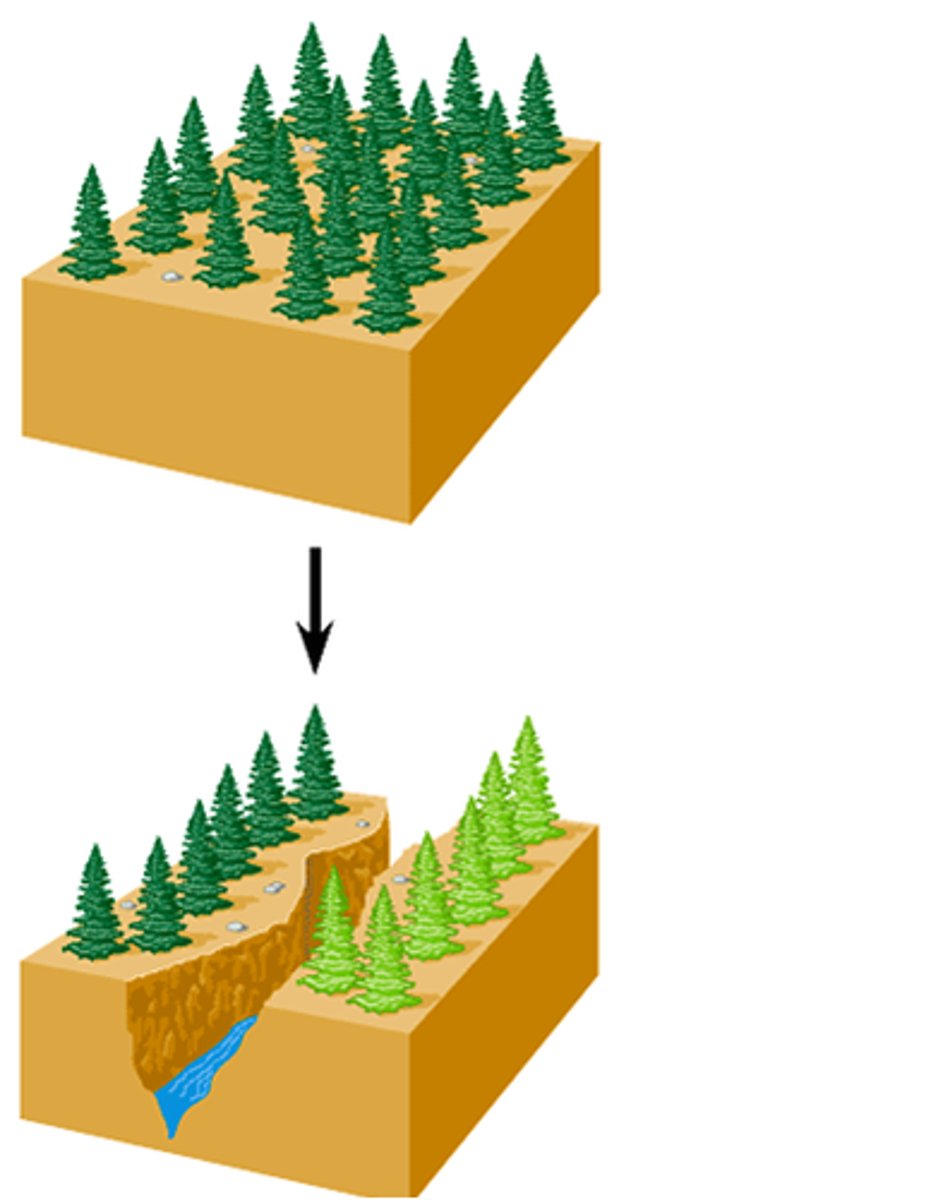Inv. 9/10 Mechanisms and Evidence Evolution
1/34
There's no tags or description
Looks like no tags are added yet.
Name | Mastery | Learn | Test | Matching | Spaced |
|---|
No study sessions yet.
35 Terms
Adaptation
Any heritable characteristic that increases an organism's ability to survive and reproduce in its environment
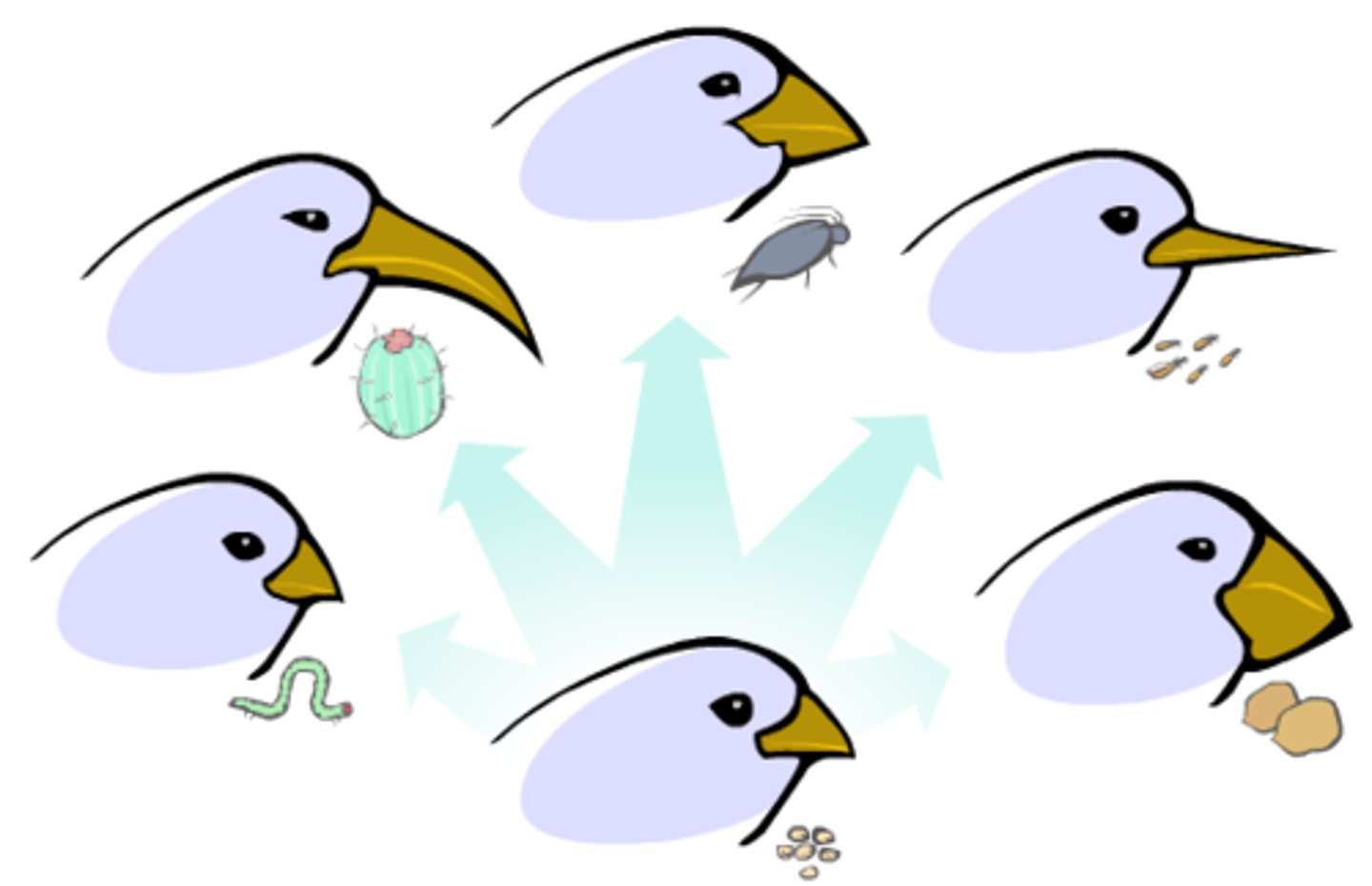
Artificial Selection
Darwin's term for the selective breeding of organisms selected for certain, desirable traits in order to produce offspring having these traits
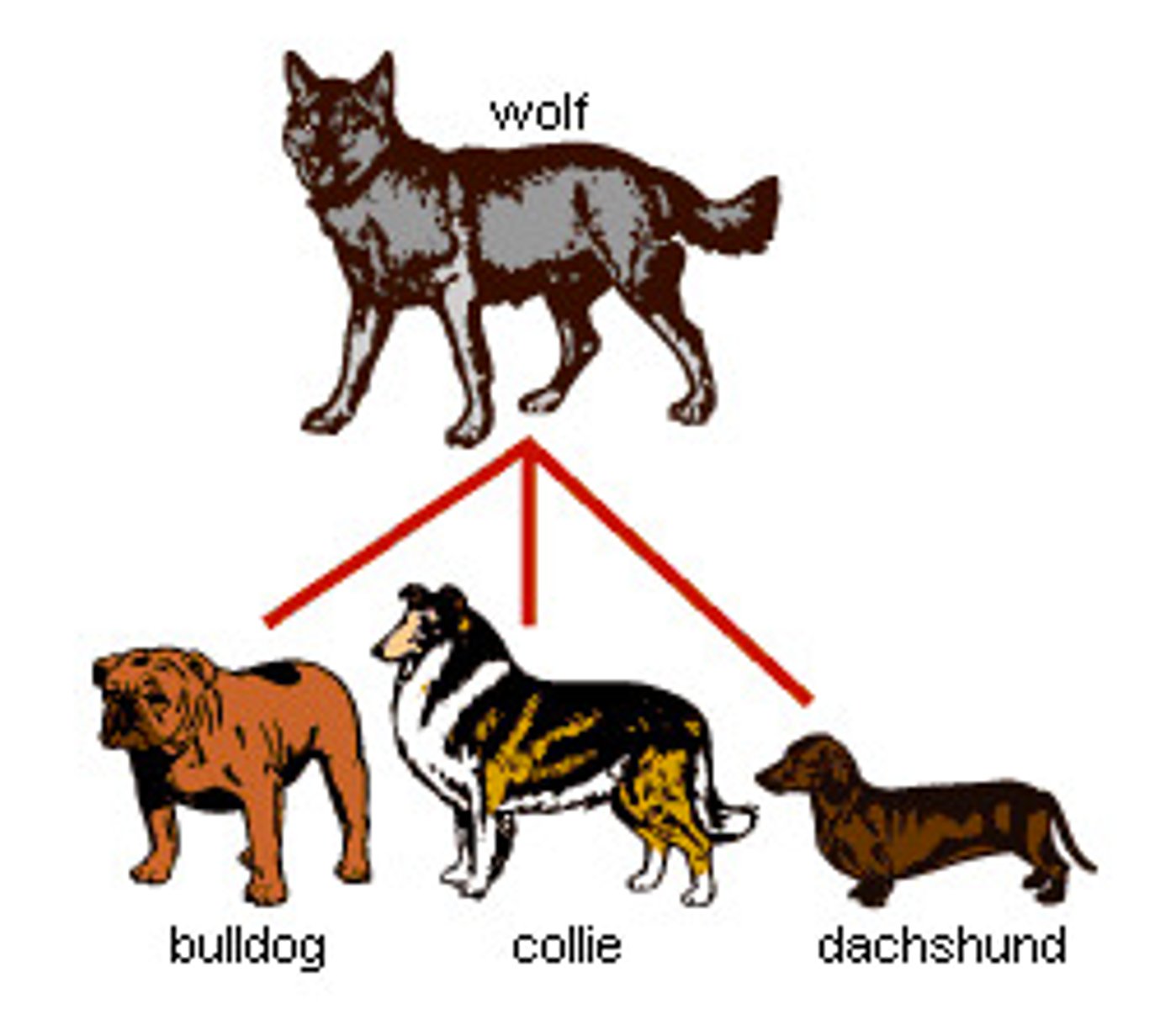
Biogeography
Study of where organisms live now and where they and their ancestors lived in the past
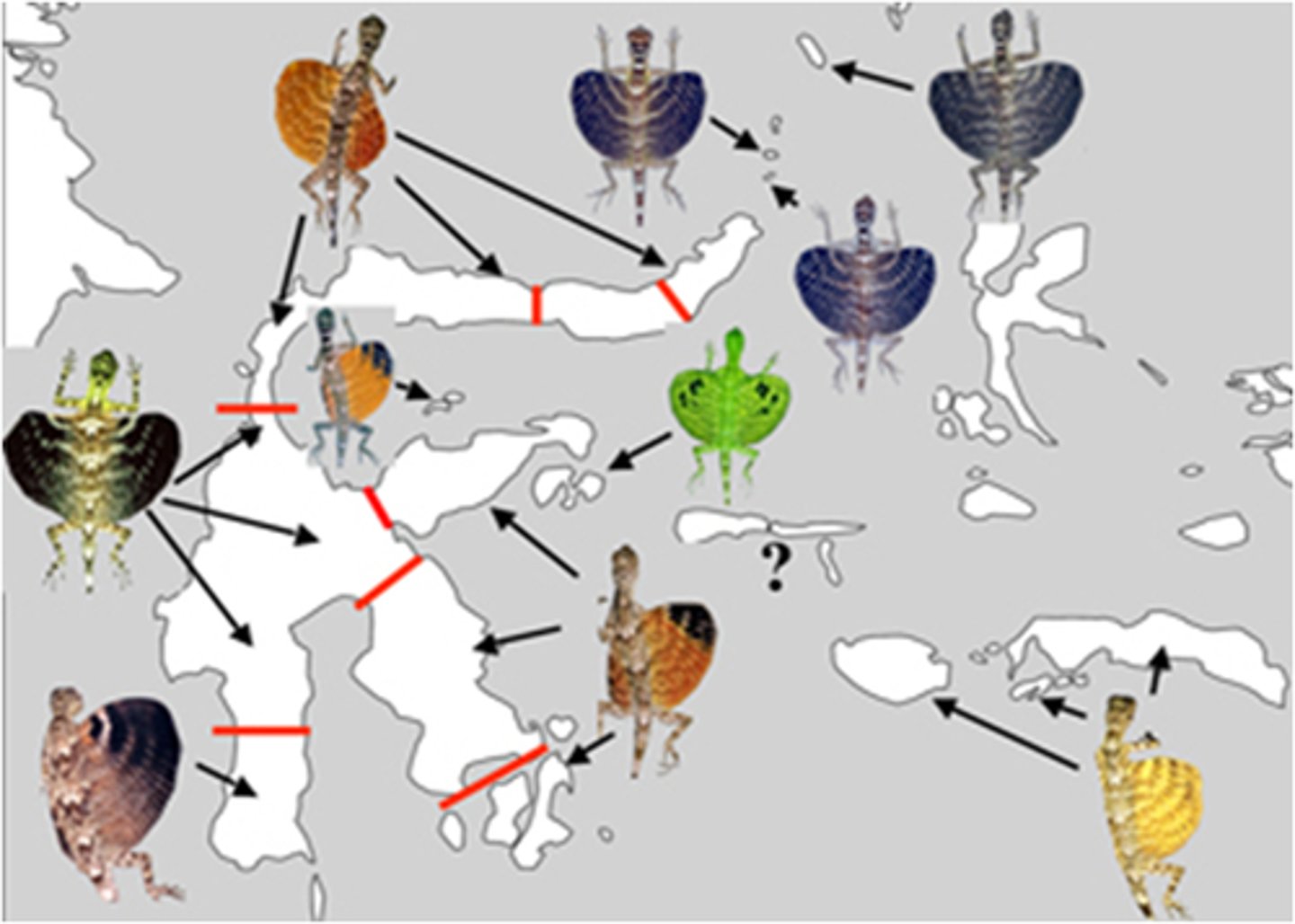
(Biological) Fitness
Describes how well an organism can survive and reproduce in its environment
Bottleneck Effect
Change in allele frequency following a dramatic reduction in the size of a population
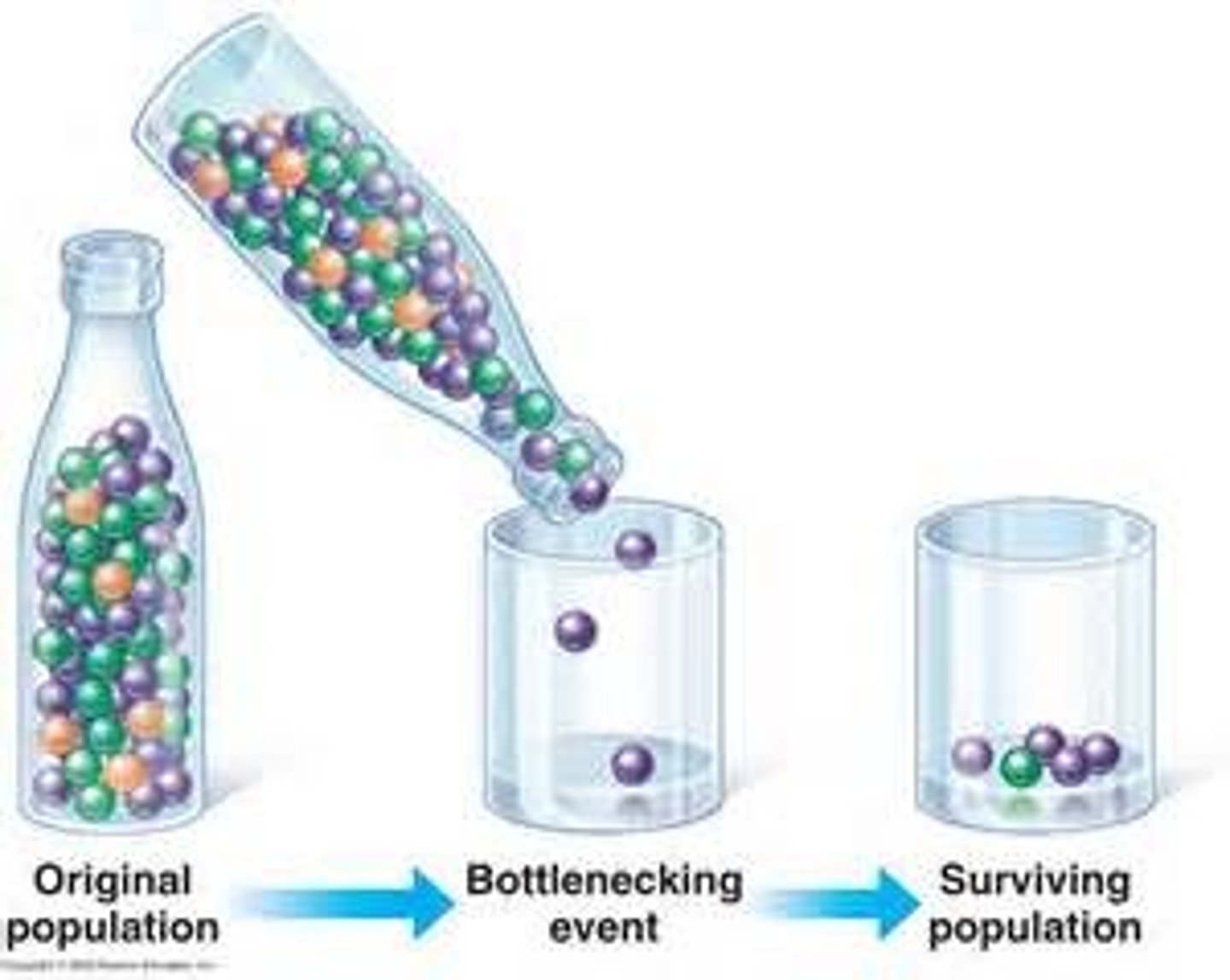
Directional Selection
When individuals at one end of the curve have higher fitness than individuals in the middle or at the other end
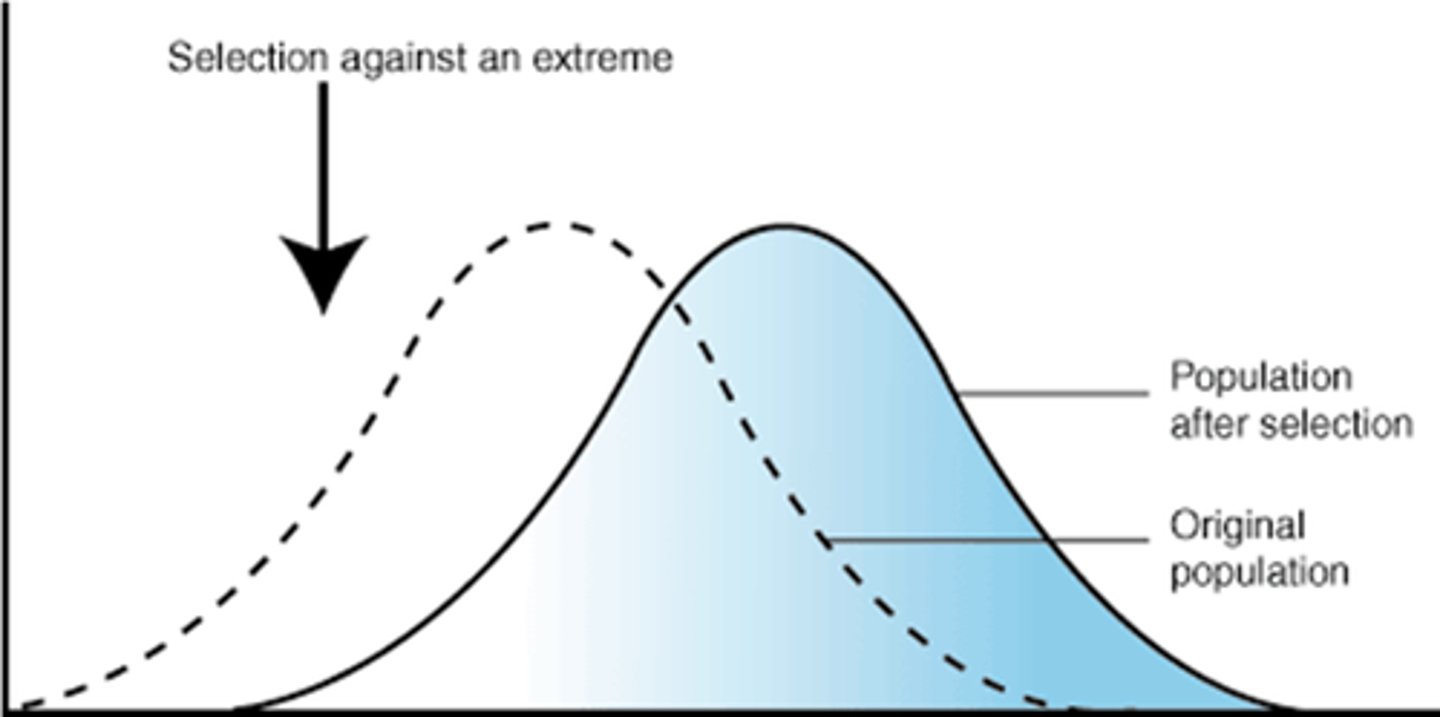
Disruptive Selection
When phenotypes at the upper and lower ends of the curve have higher fitness than individuals near the middle
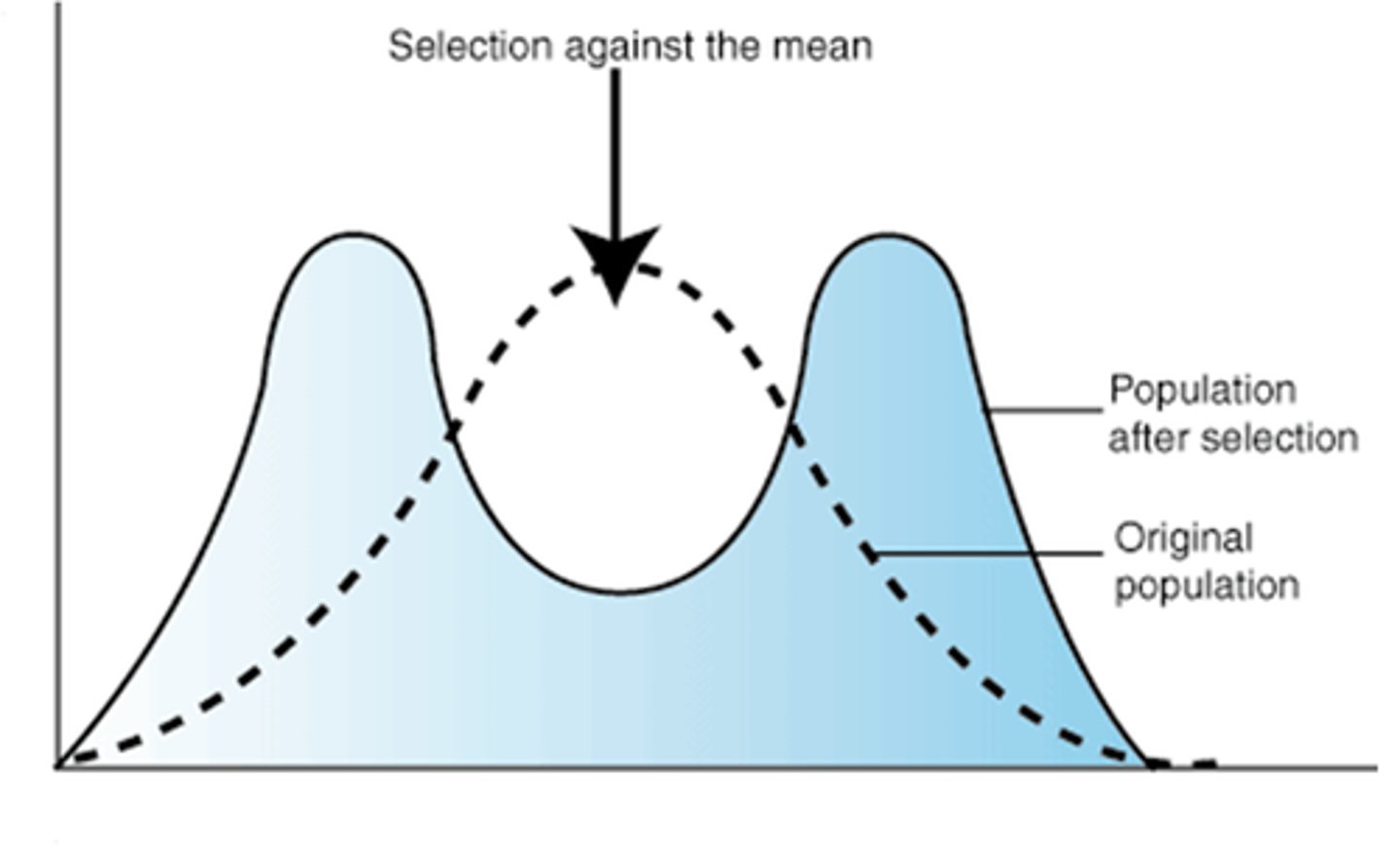
Evolution
Change over time; process by which modern organisms have descended with modification from ancient organisms
Fossil Record
Term used to describe the fossils discovered and used to place important events and species in the appropriate geologic era

Founder Effect
A kind of genetic drift in which allele frequencies change as a result of the migration of a small subgroup of a population
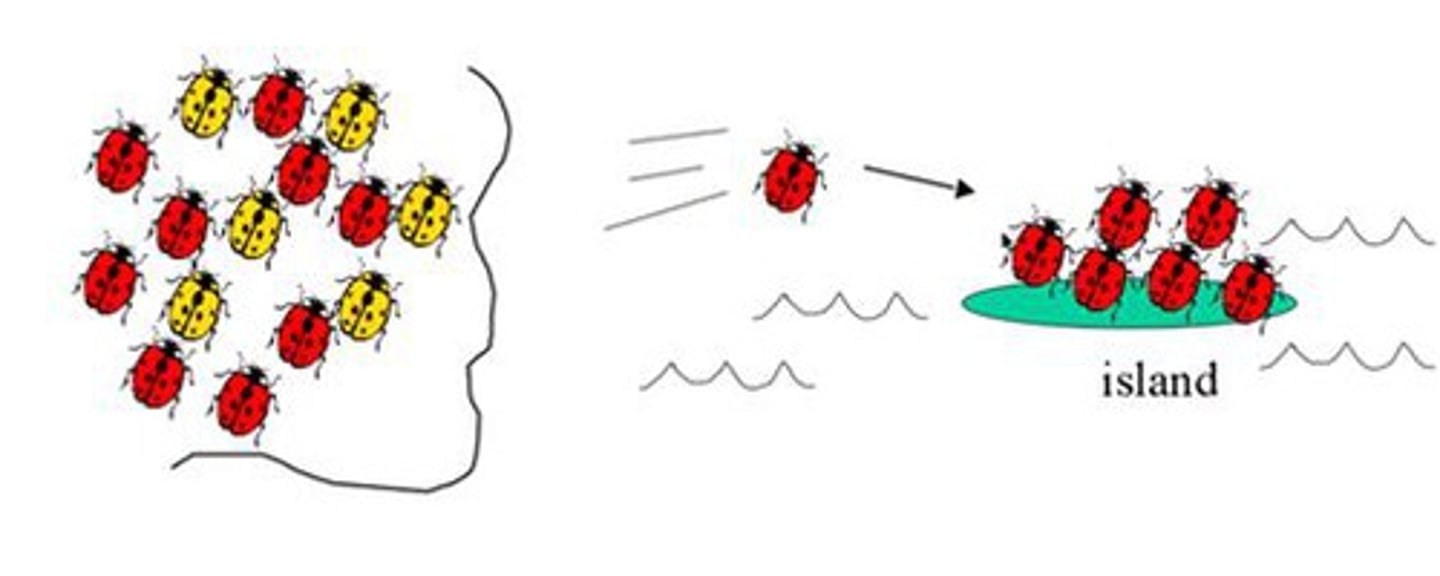
Gene Flow
Movement of individuals and their genetic material from 1 population to another
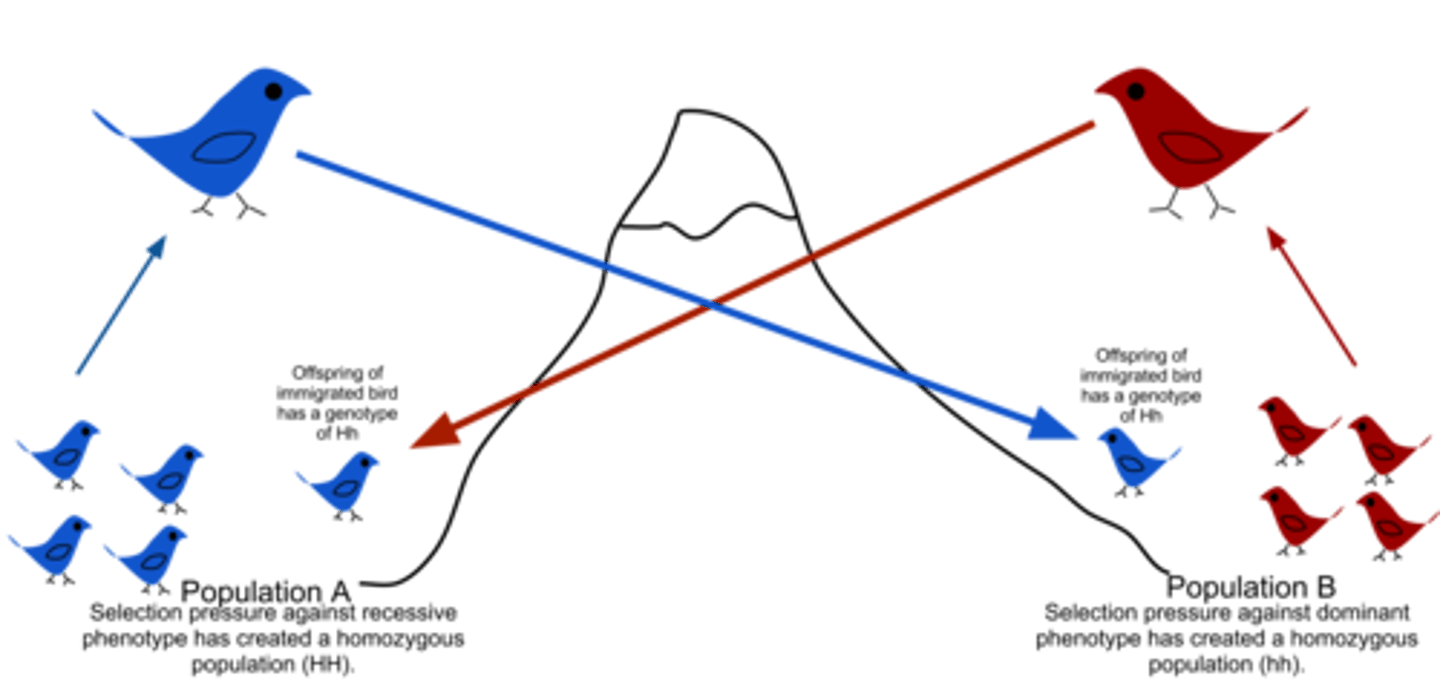
Gene Frequency
Ratio of a particular allele to the total of all other alleles of the same gene in a given population
Genetic Drift
Random change in the allele frequencies of a population
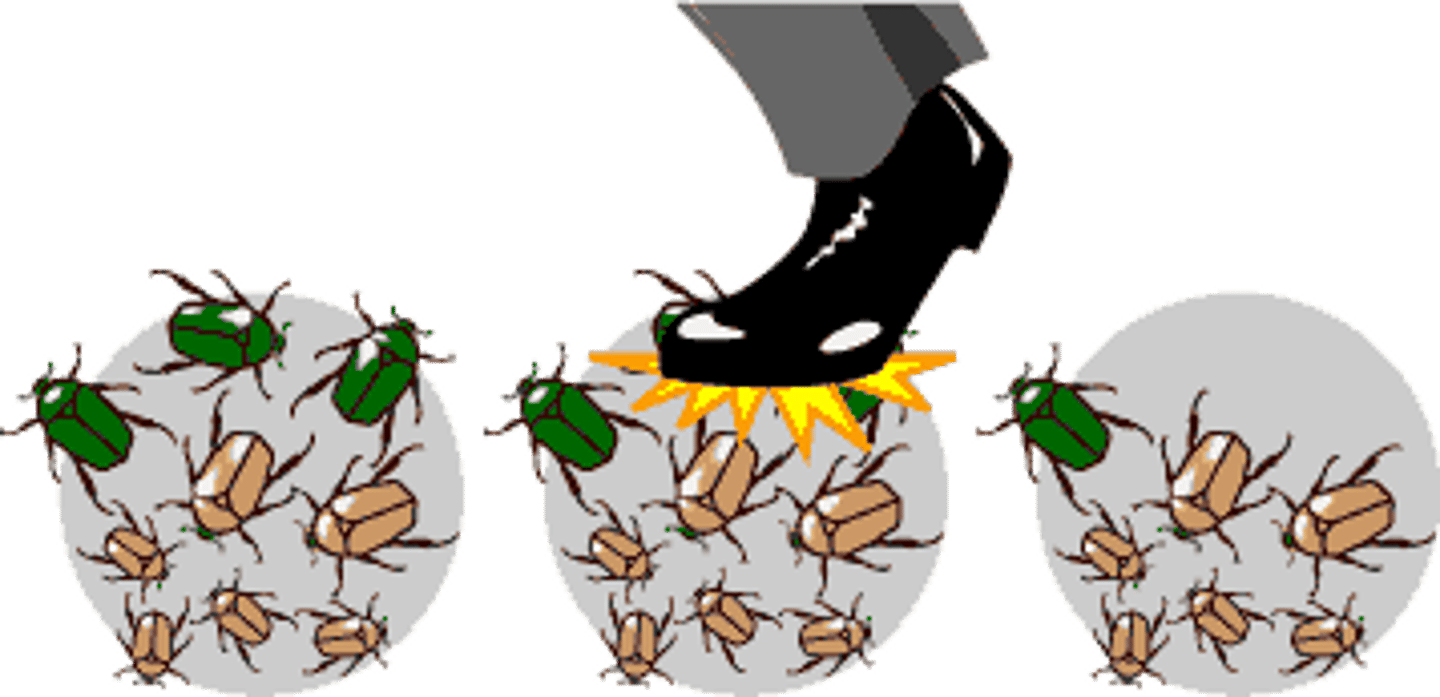
Gradualism
Hypothesis that evolution proceeds CHIEFLY by the accumulation of gradual changes over time
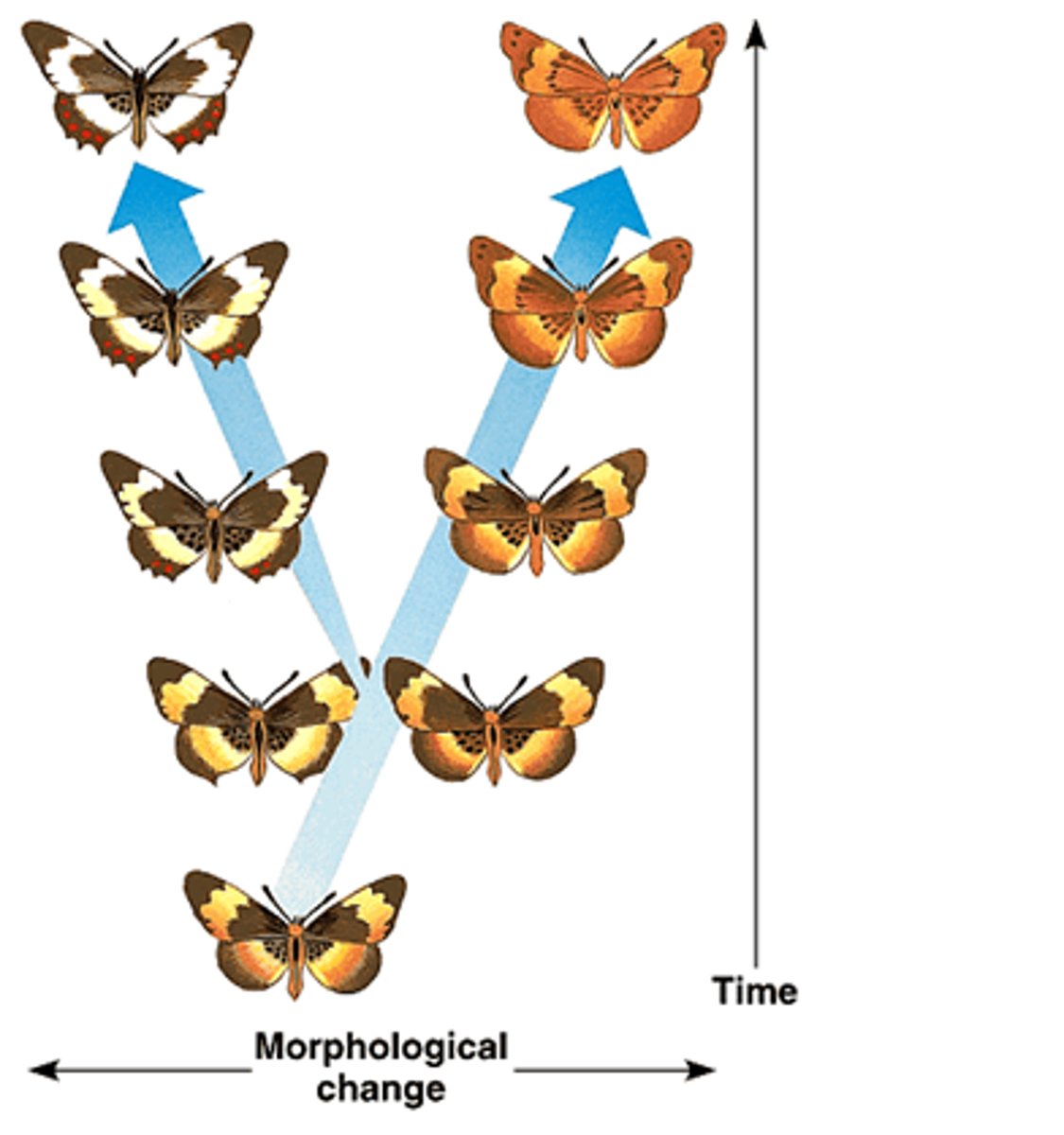
Homologous Structures
Anatomically similar structure inherited from a common ancestor
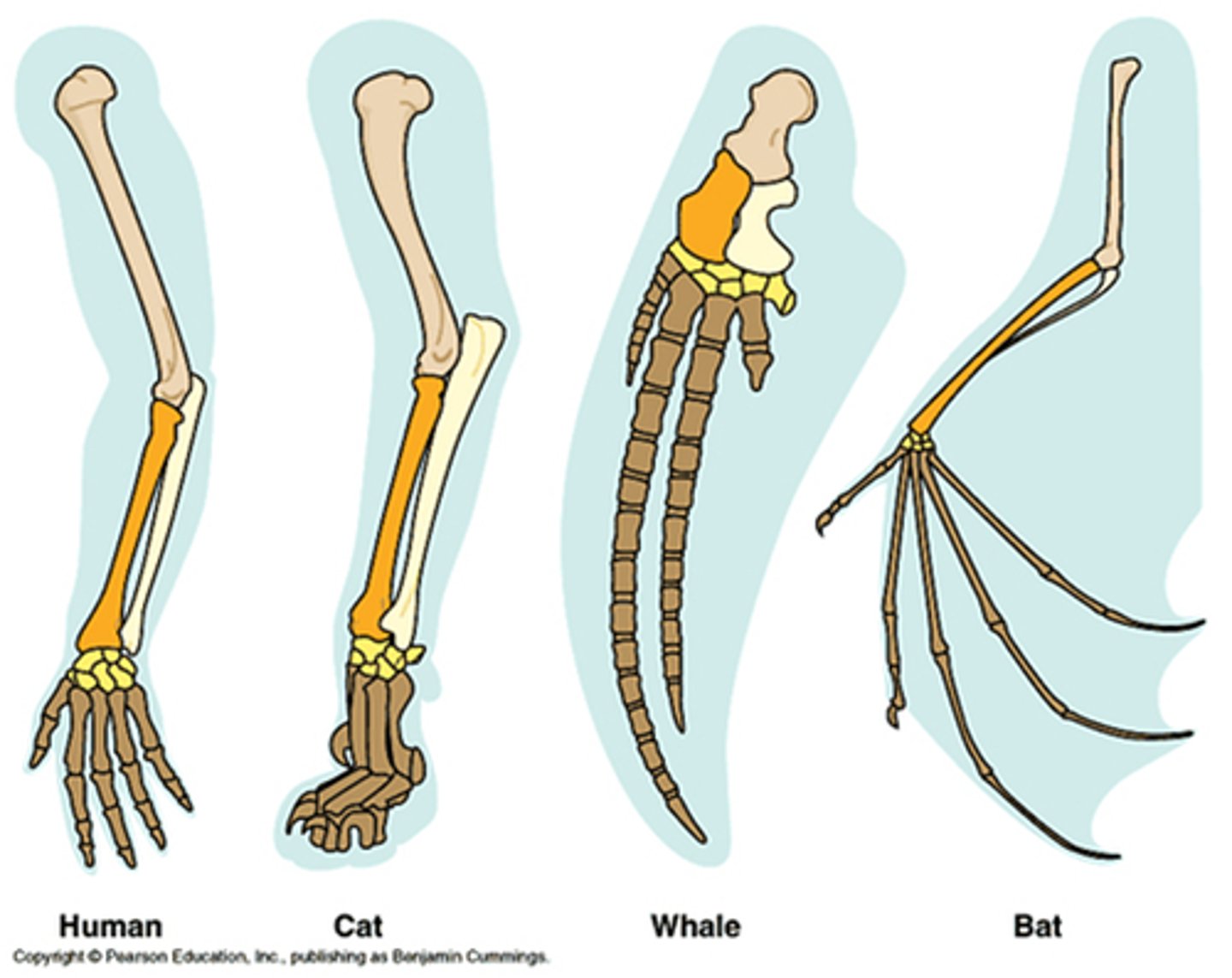
Behavioral Isolation
When 2 populations that were once able to interbreed evolve differences in courtship rituals or other behaviors and can no longer interbreed
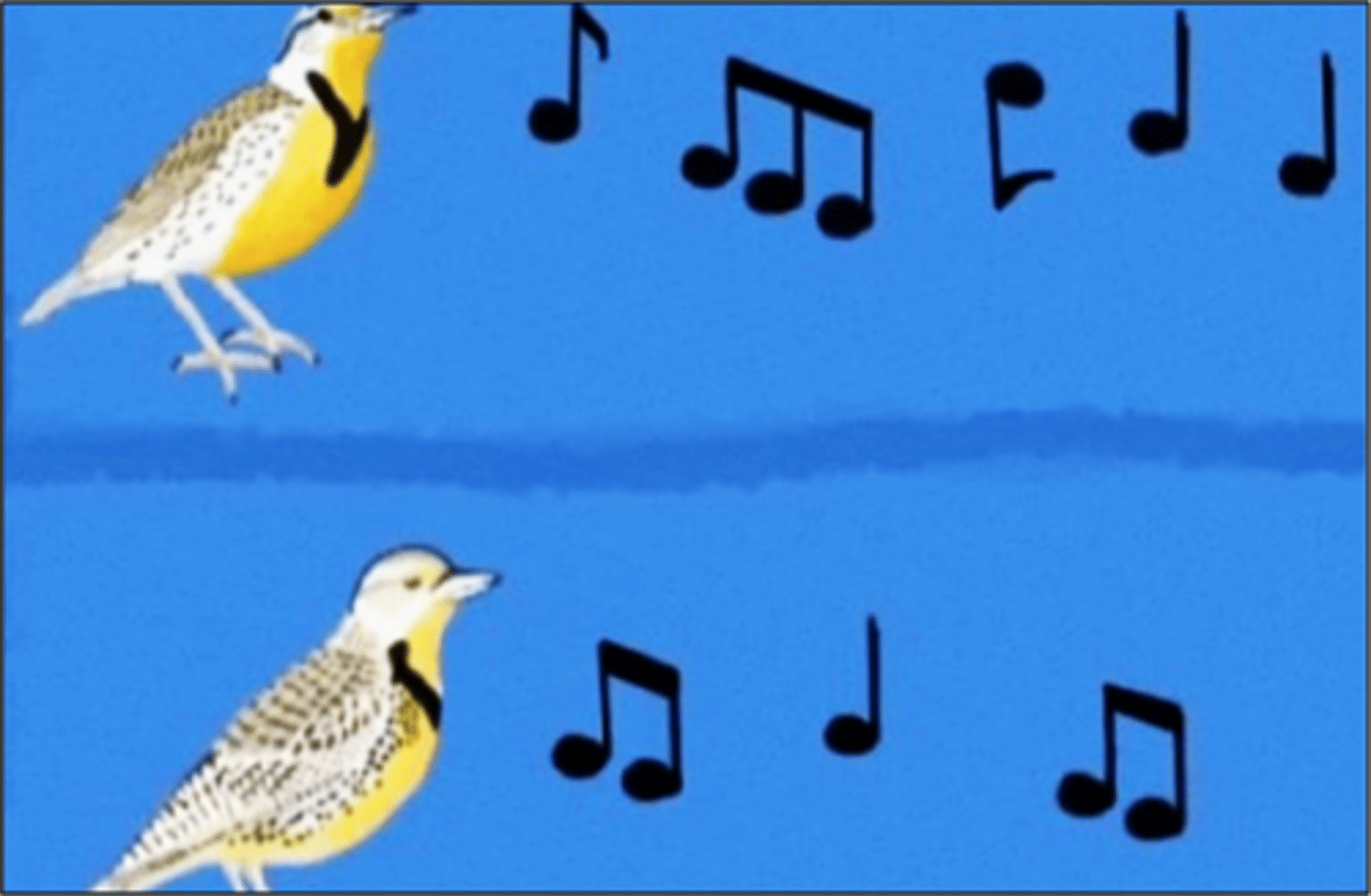
Natural Selection
Process by which organisms in nature with variations most suited to their local environment survive and leave more offspring
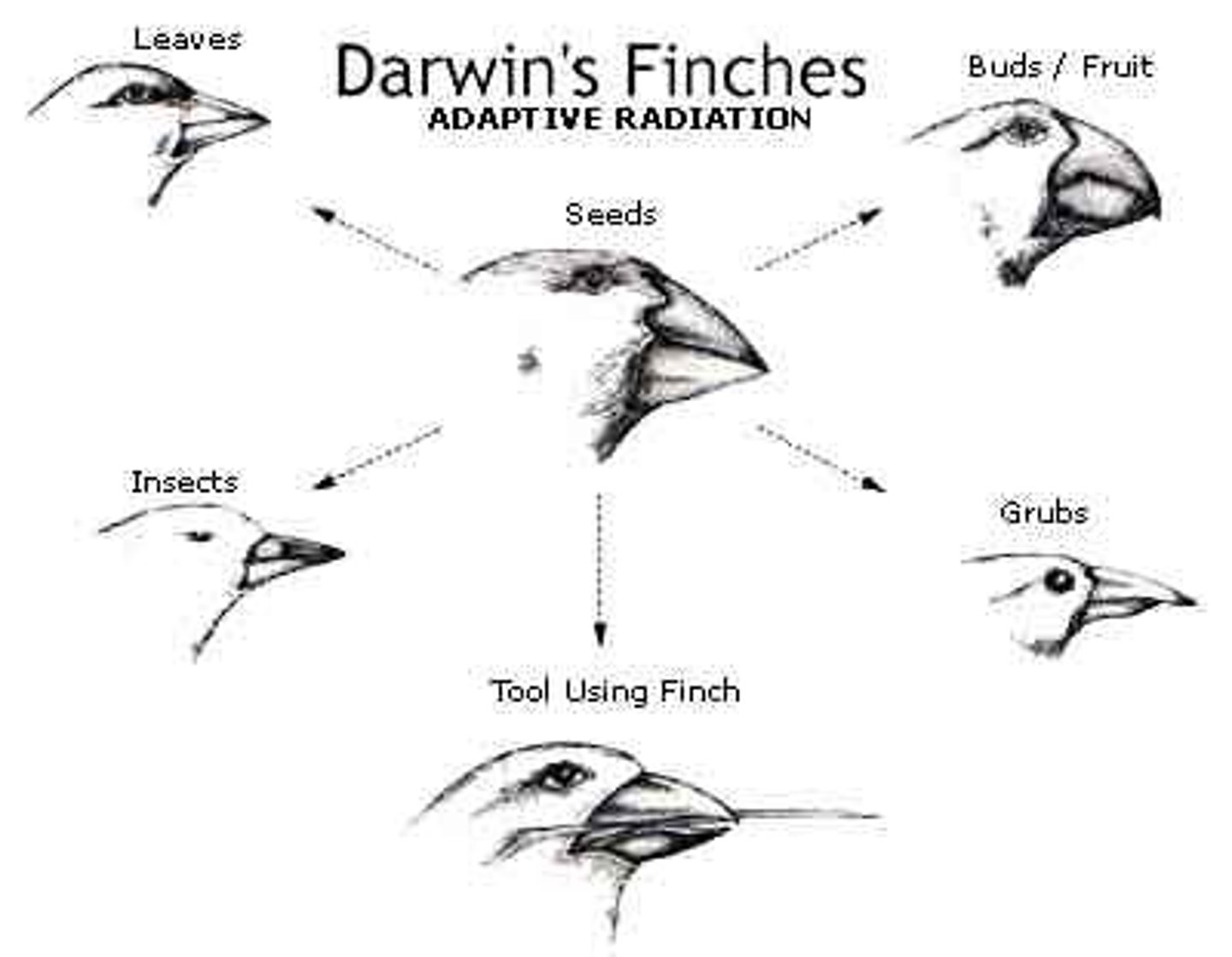
Polygenic Trait
A trait controlled by two or more genes
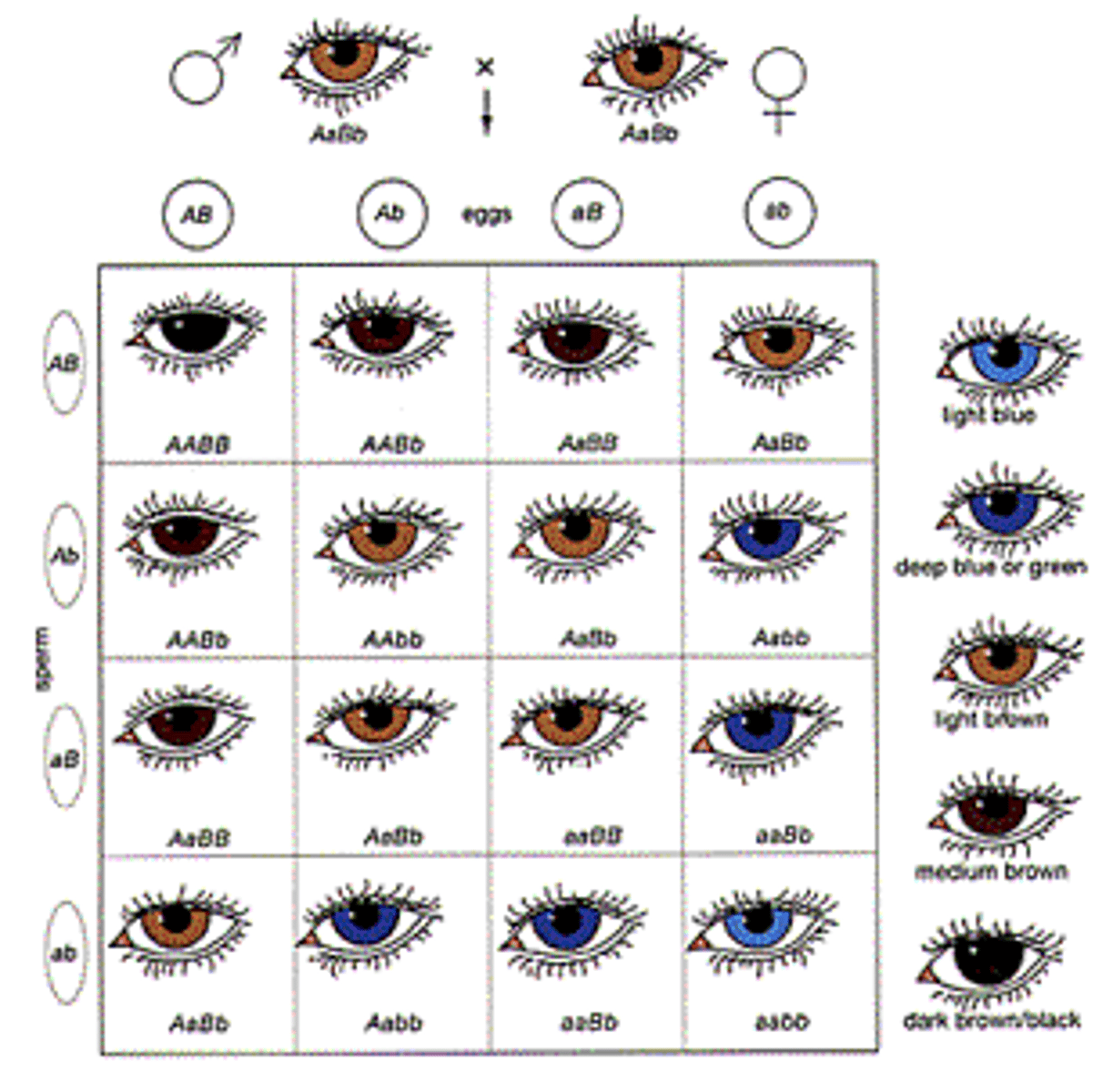
Phylogeny
Evolutionary history of lineages; groups species into larger categories that reflect lines of evolutionary descent
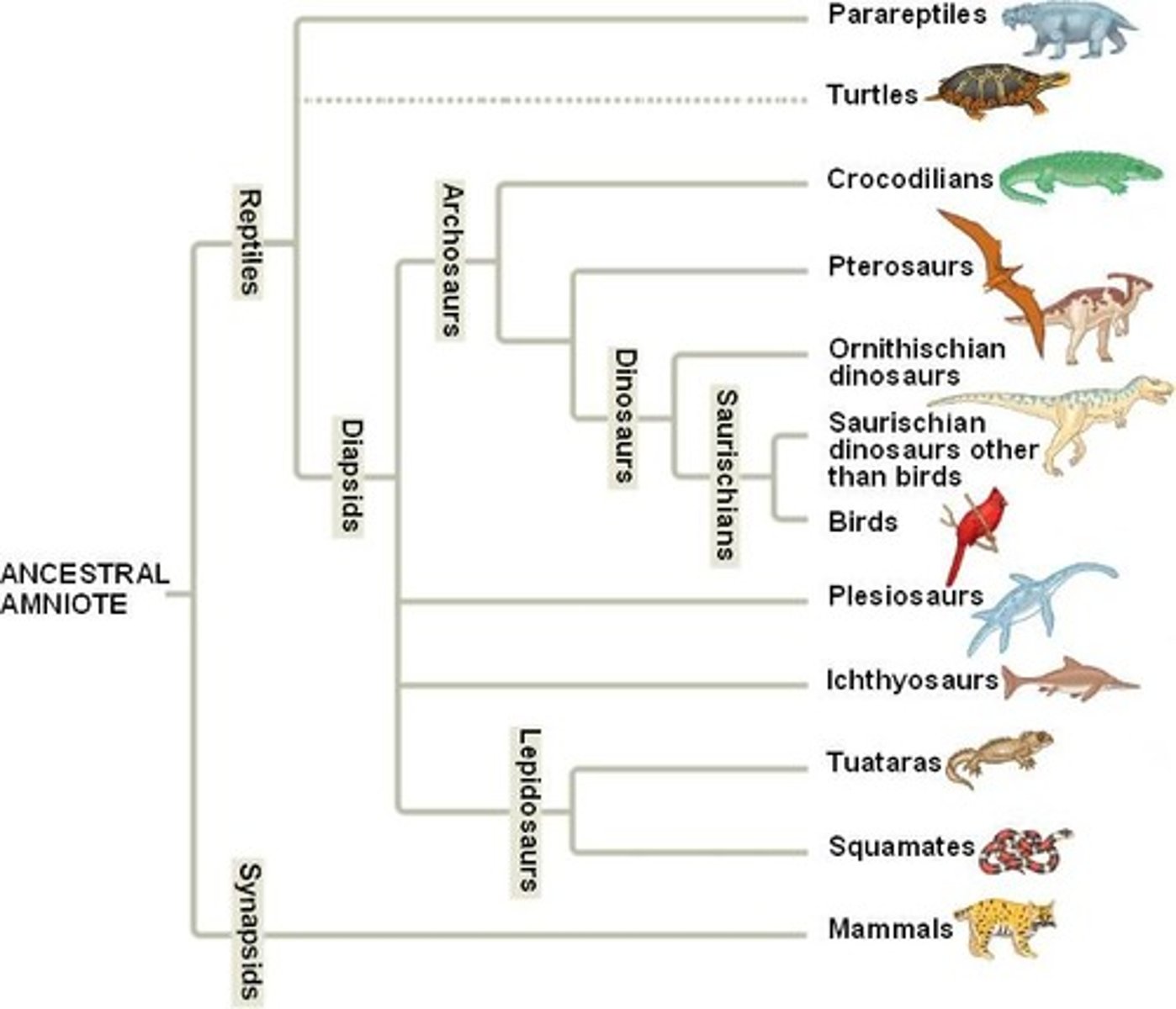
Punctuated Equilibrium
Occasionally, the fossil record shows a pattern during which equilibrium is interrupted by brief periods of geologically rapid, or abrupt, change
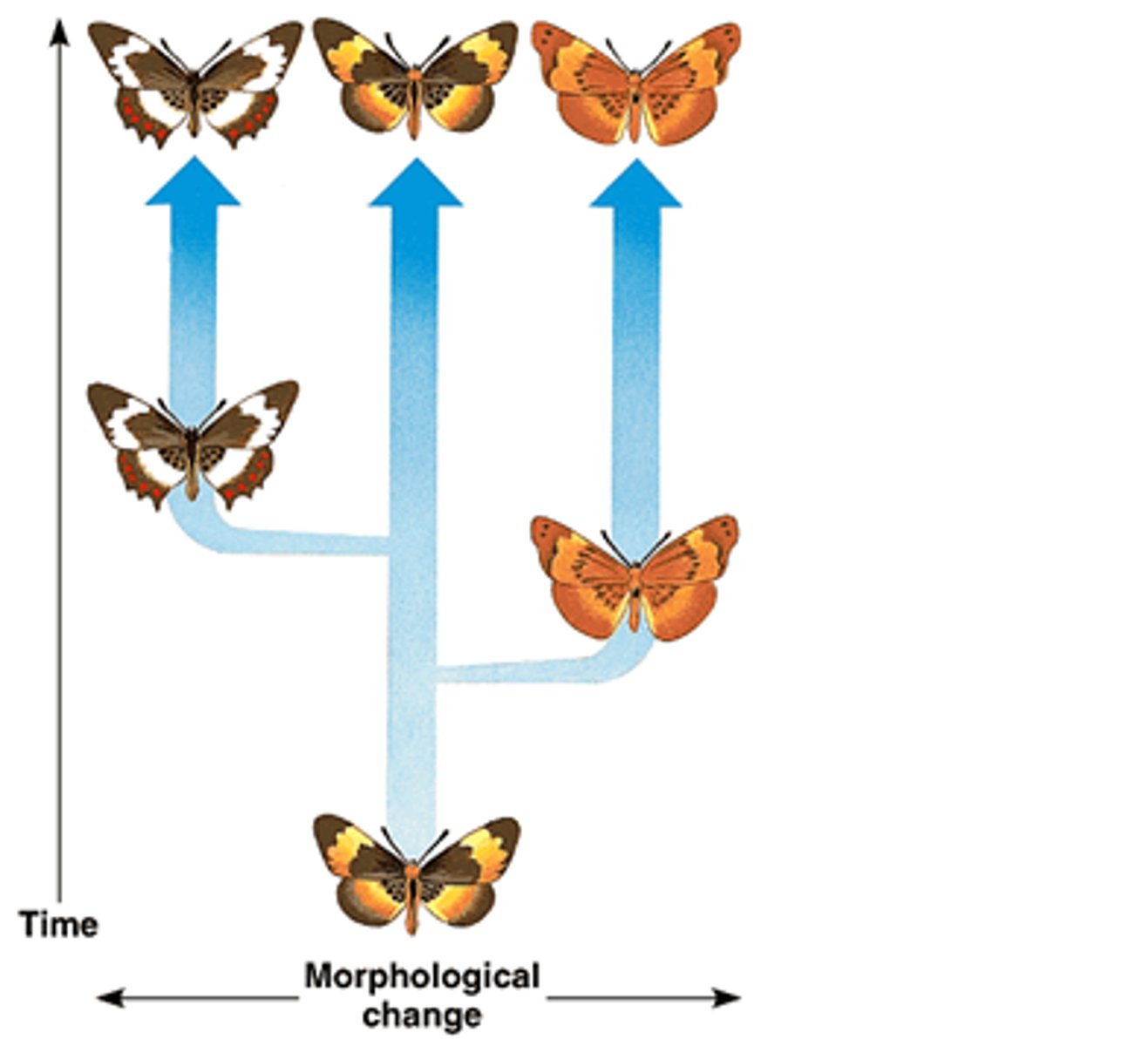
Reproductive Isolation
Members of two populations of the same species stopped interbreeding altogether and changes in one gene pool could not spread to the other
Stablizing Selection
Individuals near the center of the curve have higher fitness than individuals at either end
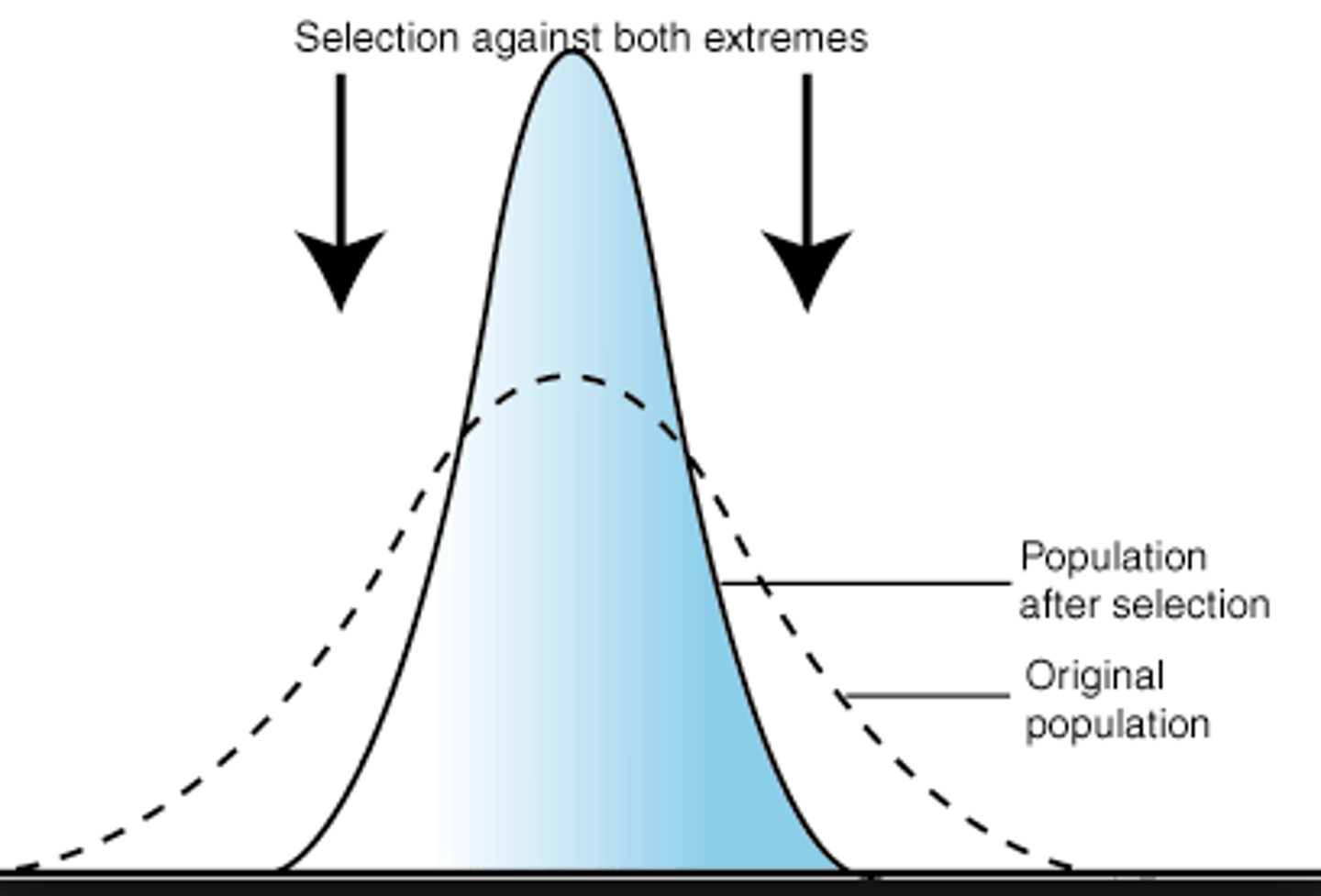
Temporal Isolation
When 2 or more species reproduce at different times (e.g. seasons, time of day or length of breeding season)
Hypothesis
Scientific explanation that can be tested by observation or experimentation
Theory
Well-established and highly-reliable explanation of phenomena that have occurred in the natural world
Speciation
Formation of a new species
Adaptive radiation
The process by which a single species, or a small group of species, evolves into several species; may occur when species migrate to new environments, or when extinction eliminates competing species
Analogous structures
Body parts of organisms that share common functions, but not common structure and development
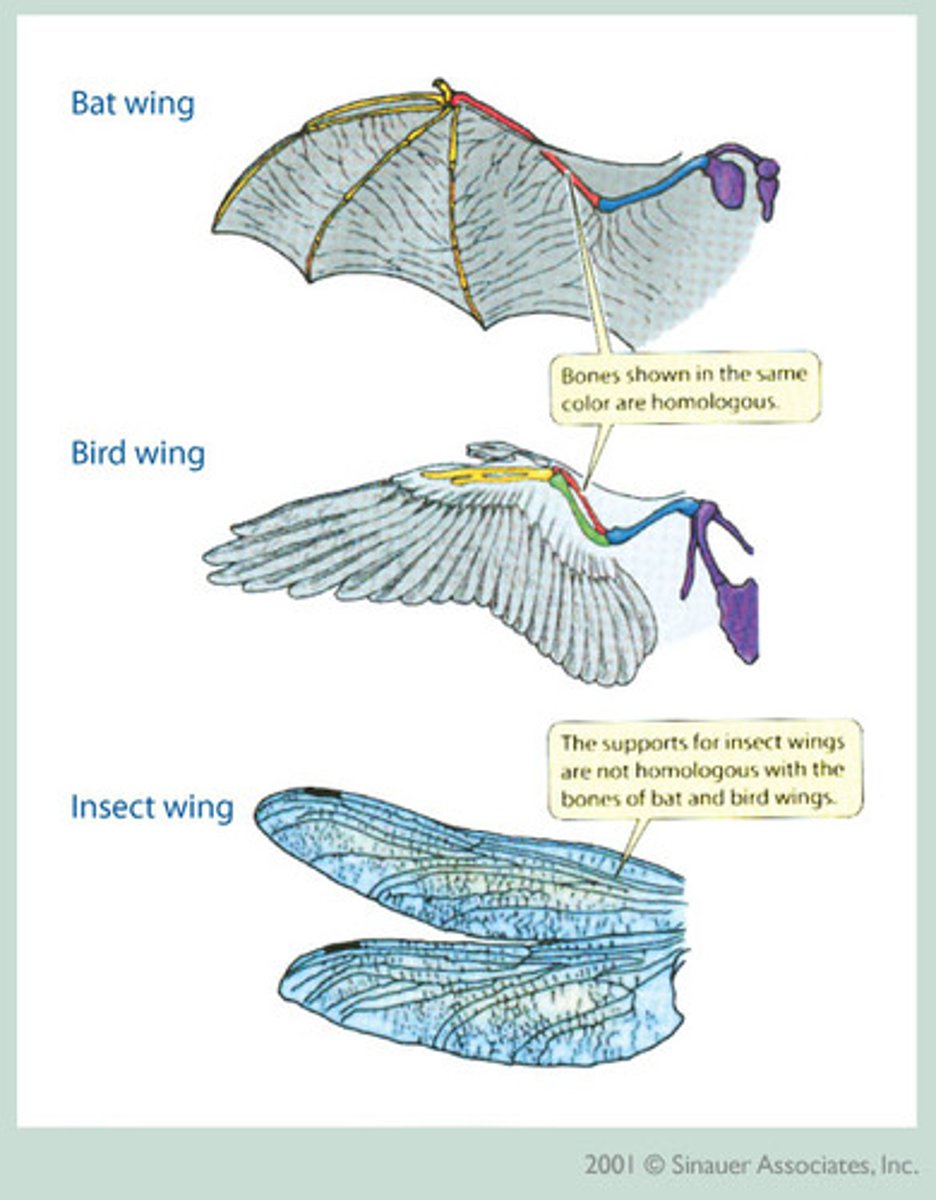
Cladogram
A branching diagram that links groups of organisms by showing how evolutionary lines of descent (lineages), branched off from common ancestors
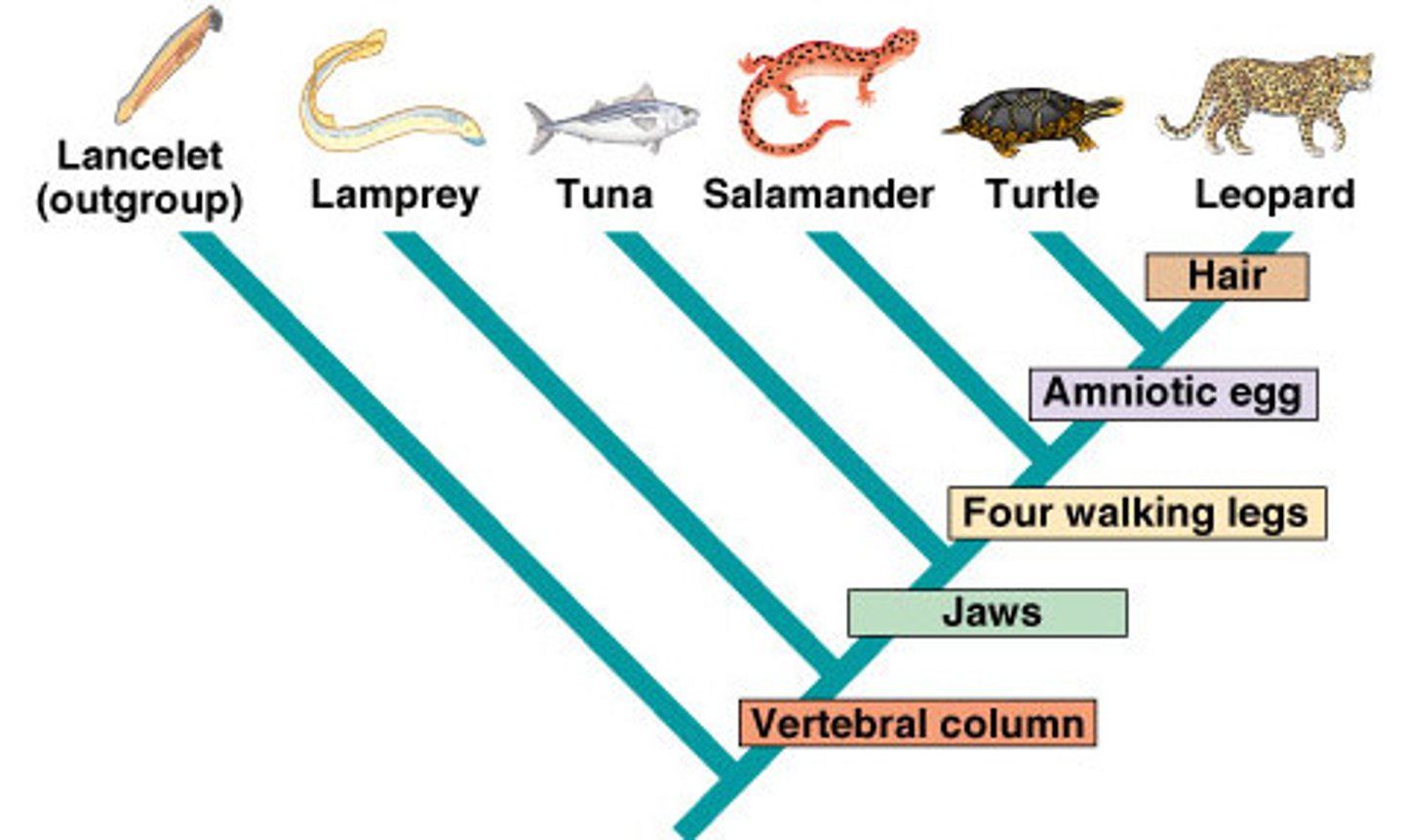
Coevolution
The process by which two species evolve in response to changes in each other over time
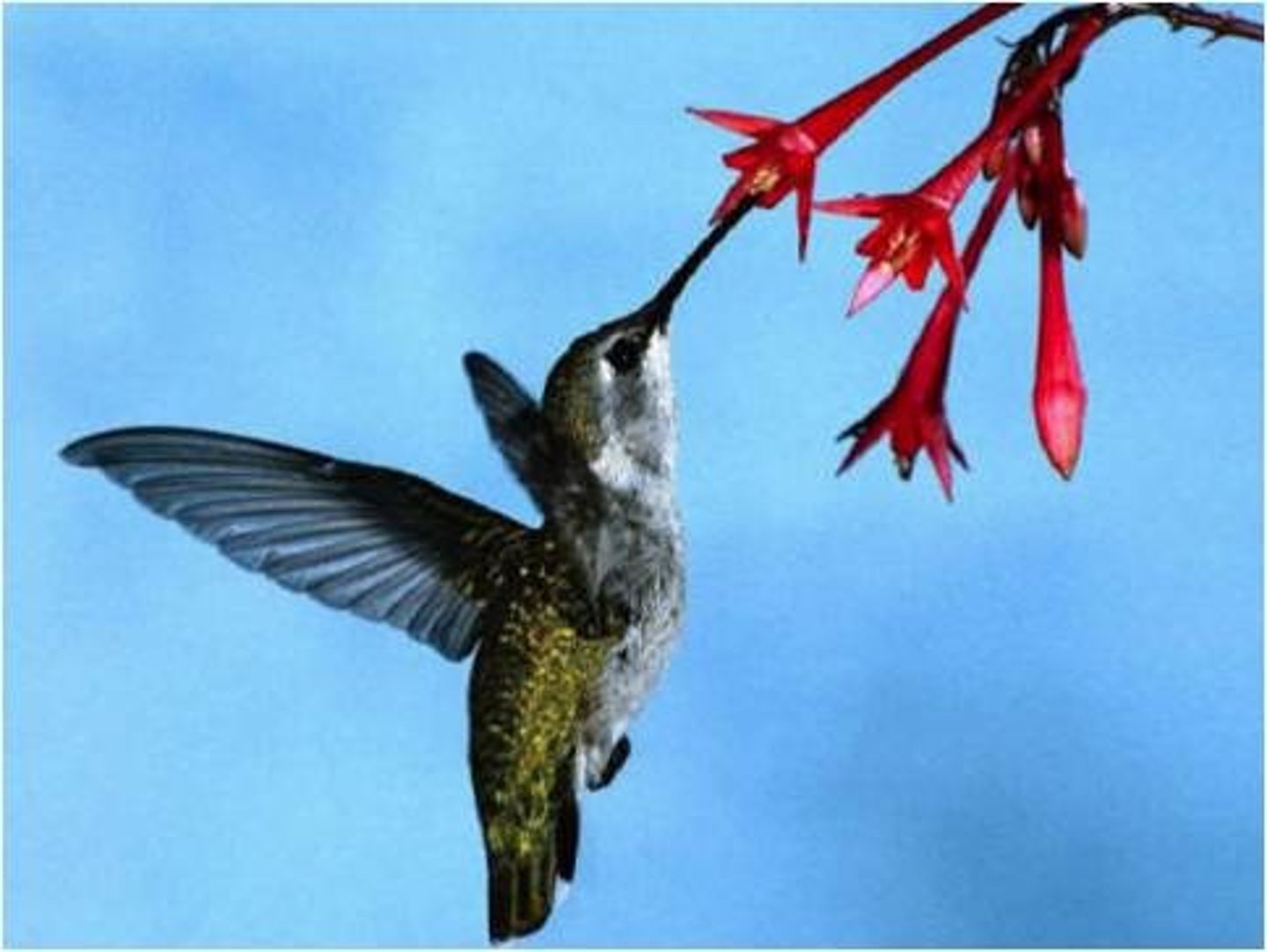
Convergent evolution
The appearance of similar characteristics in unrelated organisms
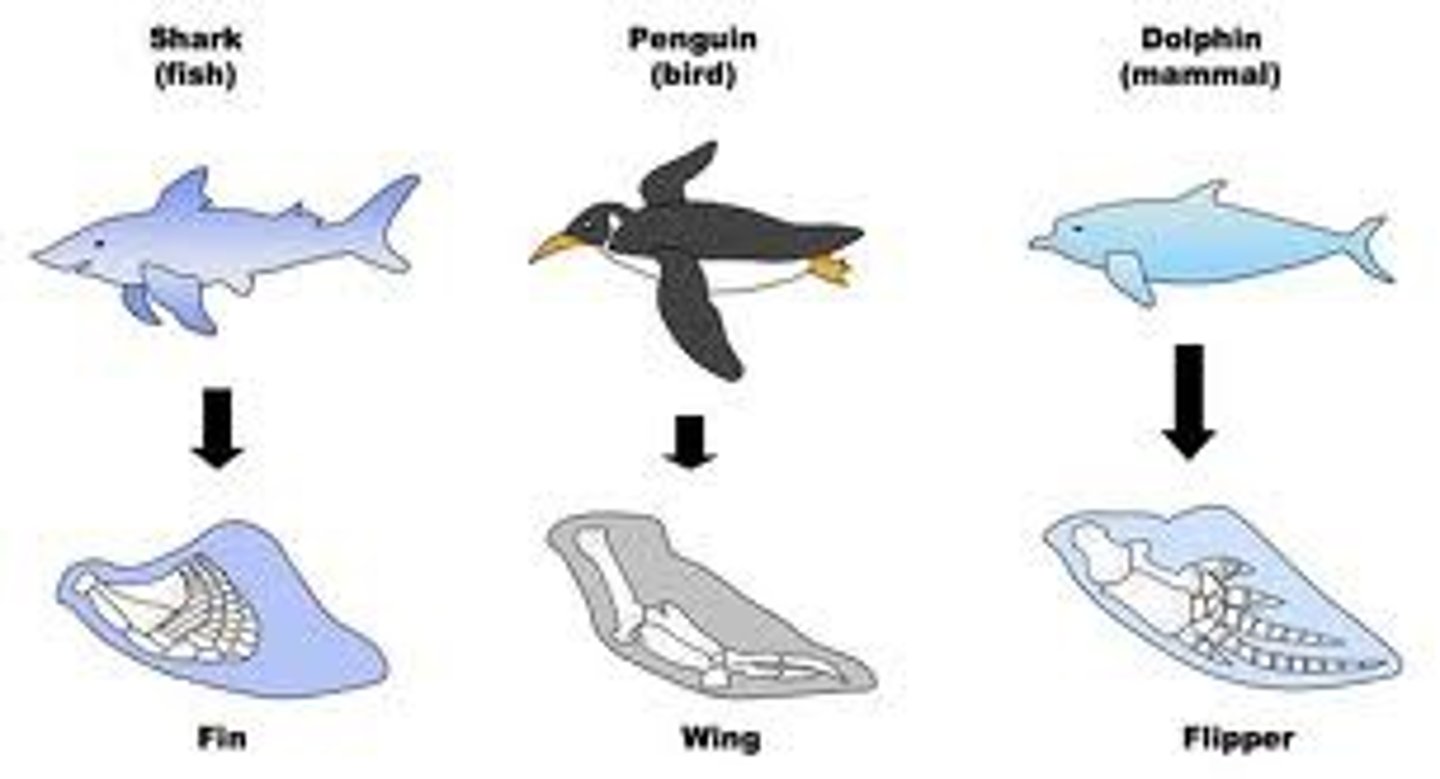
Divergent evolution
The process by which closely related species become more dissimilar over time
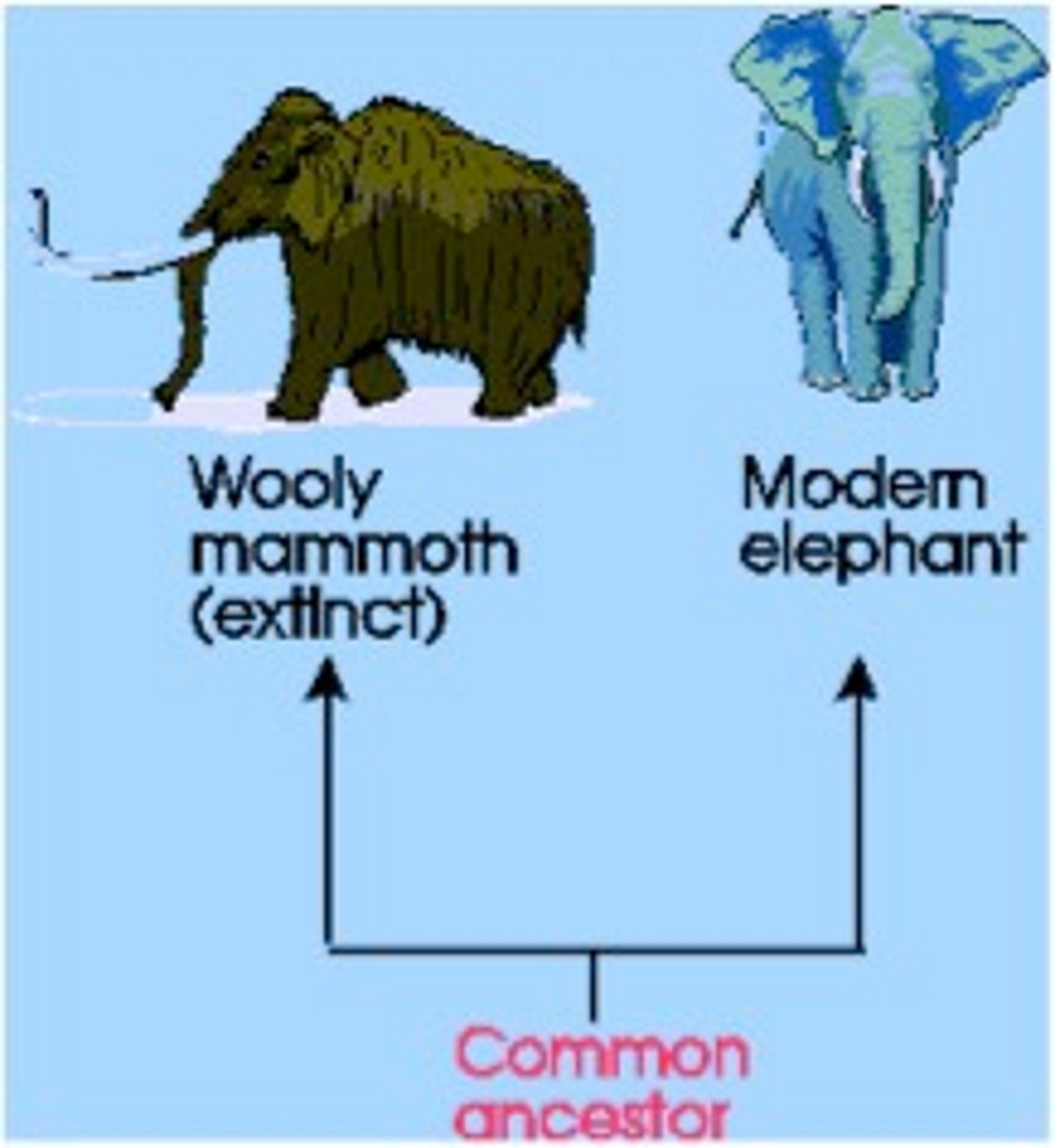
Endosymbiotic Theory
Proposes that organelles in eukaryotic cells were formed when different types of cells joined in a kind of merger "living together within"

Vestigial structures
Inherited structures but have lost much of their original size and function
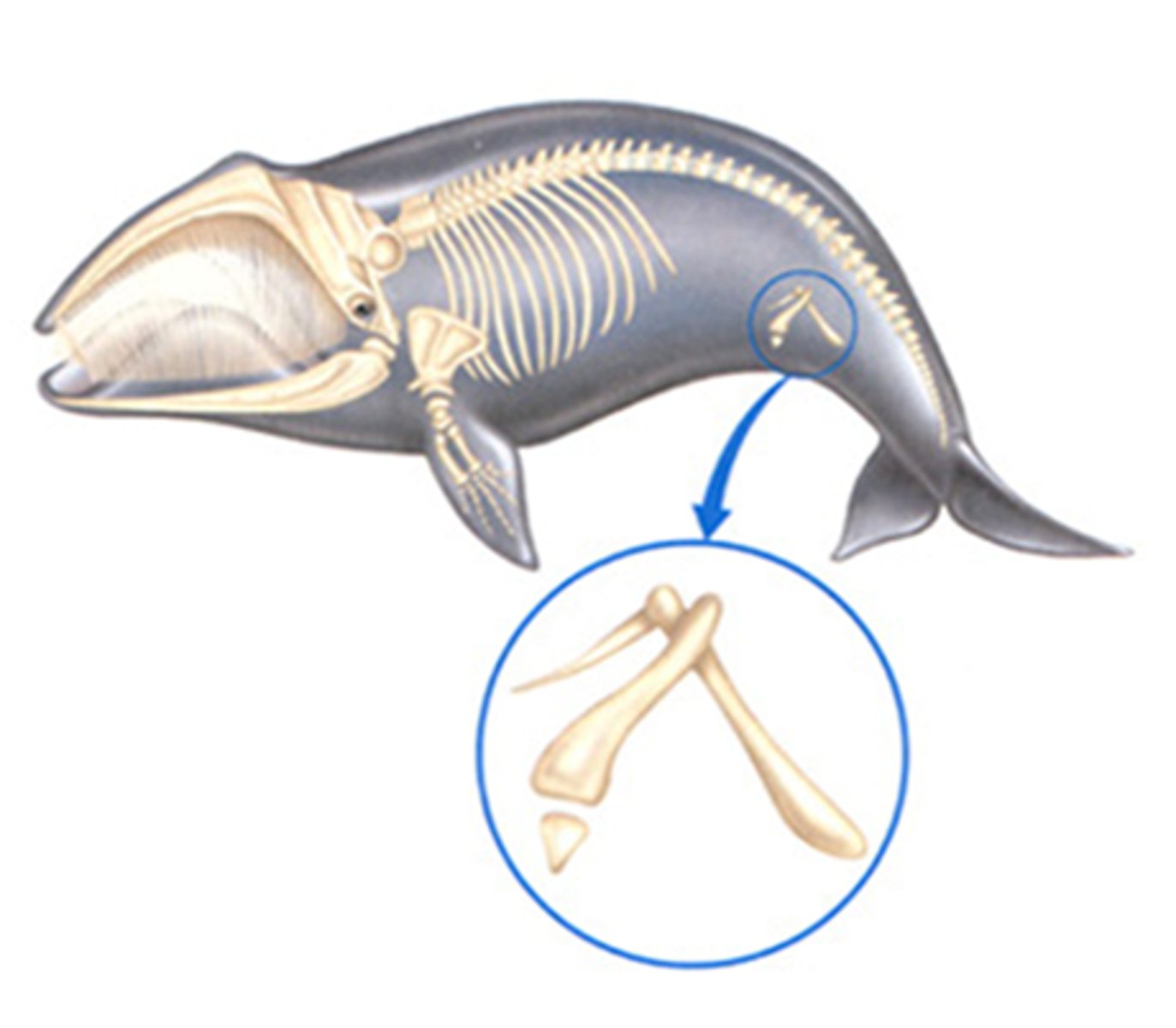
Geographic isolation
When 2 populations are separated by geographic barriers, such as rivers, mountains or bodies of water and can no longer interbreed
